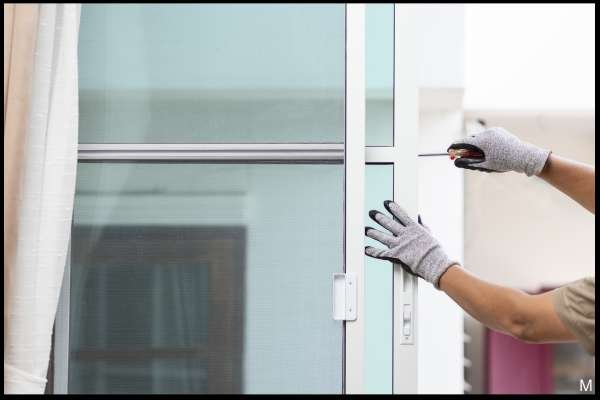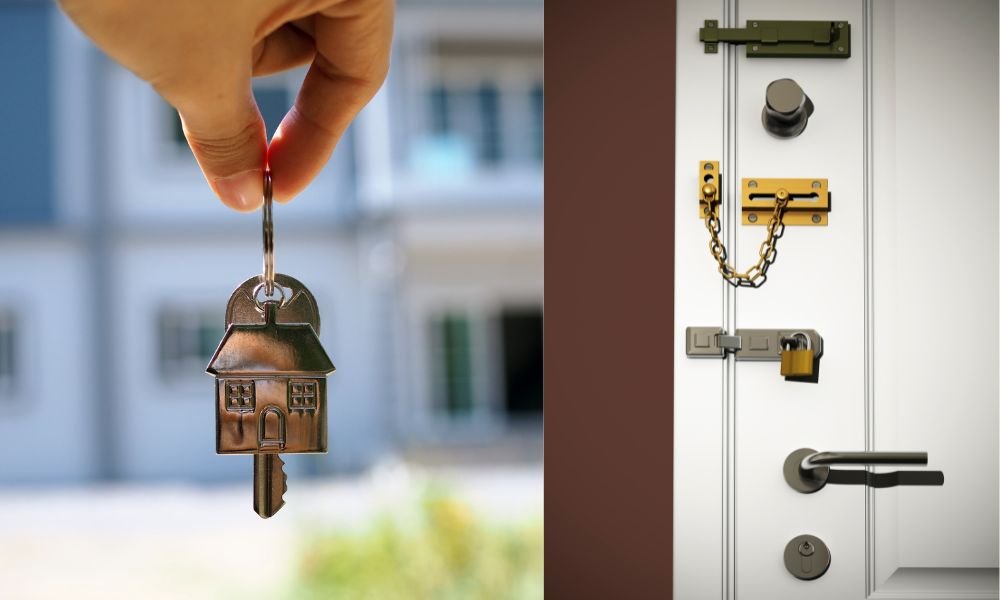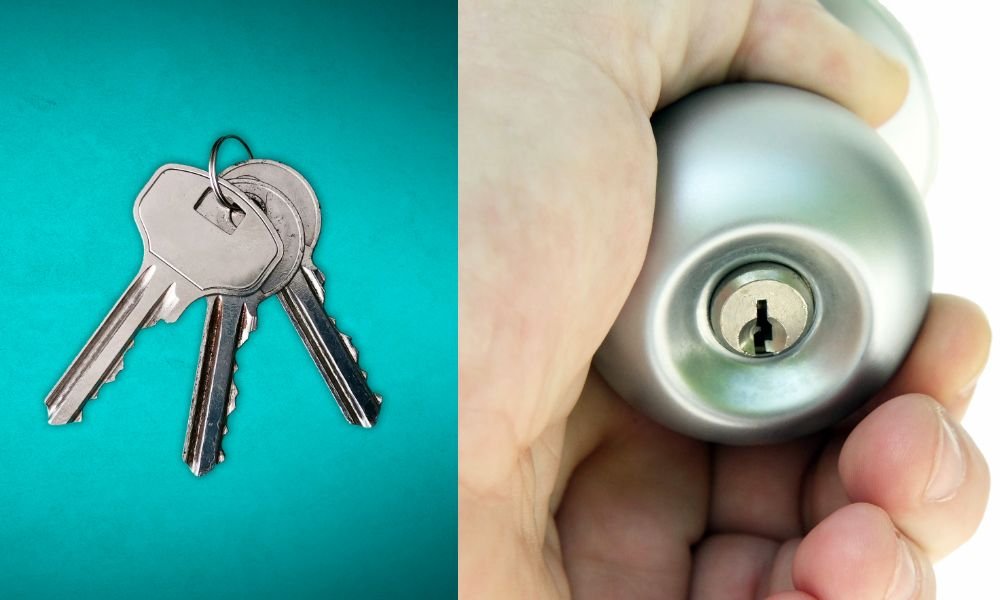In modern architecture and interior design, sliding glass doors have emerged as an essential feature, seamlessly blending indoor and outdoor spaces while infusing rooms with natural light. These doors offer a plethora of advantages beyond their aesthetic appeal, including heightened home security and enhanced energy efficiency. However, to maintain their functionality and aesthetic allure, sliding glass doors require regular attention and maintenance. This guide explores the step-by-step instructions on how to replace lock on sliding glass door. Details essential tools underscores safety precautions offers maintenance tips, and emphasizes the importance of routine checks.
Benefits of Sliding Glass Doors:
- Abundant Natural Light: These doors serve as conduits for natural light, illuminating interior spaces and fostering a bright, inviting ambiance.
- Space Optimization: Unlike conventional hinged doors, the doors slide horizontally along a track, conserving valuable floor space and optimizing room layout.
- Seamless Indoor-Outdoor Flow: They facilitate a seamless transition between indoor and outdoor living areas, ideal for entertaining guests or relishing scenic views.
- Energy Efficiency: High-quality glass doors, equipped with proper insulation, contribute to improved energy efficiency by minimizing heat transfer and reducing reliance on artificial lighting.
- Aesthetic Versatility: With their sleek, contemporary design, these elevate the visual appeal of any space, enhancing curb appeal and augmenting property value.
- Customization Options: Sliding glass doors are available in a myriad of sizes, configurations, and finishes, offering homeowners the flexibility to tailor their choices to suit diverse architectural styles and personal preferences.
Types of Sliding Glass Doors:
- Patio Doors: Designed for seamless access to outdoor spaces such as patios, decks, or gardens, patio doors are typically larger and may feature multiple panels for expansive views.
- French Sliding Doors: Combining the timeless elegance of French doors with the functionality of sliding panels, French sliding doors exude sophistication while conserving space.
- Pocket Doors: Ideal for rooms with limited space, pocket doors slide into a recessed wall cavity when open, maximizing floor space and maintaining a streamlined aesthetic.
- Bi-fold Doors: With multiple panels folding and stacking when opened, provide panoramic views and unobstructed outdoor access.
Common Issues with Door Locks:

- Alignment Challenges: Over time, sliding doors may become misaligned, resulting in difficulty locking or unlocking due to track misalignment.
- Wear and Tear: Components such as the latch, strike plate, or internal mechanisms may degrade over time, leading to diminished lock performance.
- Corrosion and Rust: Exposure to moisture and environmental elements can cause rust and corrosion, compromising the structural integrity of the lock.
- Key Breakage: Keys may break off inside the lock, rendering it inoperable and necessitating replacement or repair.
- Security Breaches: Inadequate locks or compromised mechanisms may leave homes vulnerable to burglary attempts, emphasizing the importance of robust security features.
Steps to Replace Lock:
- Identify the Issue: Assess the specific problem with the existing lock to determine the type of replacement required.
- Select a Replacement Lock: Choose a high-quality replacement lock that matches the specifications and addresses the identified issue.
- Gather Essential Tools: Ensure you have the necessary tools on hand, including screwdrivers, pliers, and potentially a drill for installation.
- Remove the Old Lock: Disassemble and remove the existing lock, ensuring all components are detached and disposed of properly.
- Install the New Lock: Carefully follow the manufacturer’s instructions to securely install, ensuring alignment and smooth operation with the door frame.
- Test the Lock: Test the new lock with the door to ensure smooth engagement and disengagement without resistance.
Tools Required for Replacing Lock:
- Screwdriver Set (Phillips and Flathead)
- Pliers (Regular and Needle-Nose)
- Power Drill (if necessary)
- Lubricant (for maintenance)
Safety Precautions to Take:
- Protective Gear: Wear gloves and safety goggles to shield hands and eyes from potential injuries during the replacement process.
- Secure the Door: Ensure this is securely closed and locked before commencing the replacement to prevent accidental openings or slips.
- Stable Work Surface: Perform the replacement on a stable, level surface to minimize the risk of accidents or falls.
- Power Source Disconnection: If utilizing power tools like drills, disconnect the power source to mitigate the risk of electrical hazards.
Tips for Maintaining Locks:
- Regular Cleaning: Regularly clean the lock and surrounding areas to prevent dirt buildup that affects functionality.
- Lubrication: Apply a silicone-based lubricant to hinges, tracks, and lock mechanisms periodically to ensure smooth operation and prevent corrosion.
- Routine Inspection: Regularly inspect the lock, rust, or misalignment, addressing any issues promptly to prevent further damage.
- Adjust Track Alignment: If the door exhibits difficulty in opening or closing, check the track alignment and adjust as necessary to facilitate smooth movement.
- Upgrade Security Features: Install deadbolts or security bars to enhance sliding glass door security, particularly in high-risk locations.
Importance of Regularly Checking Locks:
Routine checks and maintenance of door locks are imperative for several reasons:
- Enhanced Security: Ensuring locks are in optimal condition fortifies home security, safeguarding against unauthorized entry and potential intrusions.
- Safety Assurance: Functional locks reduce safety risks like accidental openings or malfunctions, minimizing injuries to occupants.
- Prolonged Lifespan: Regular upkeep extends sliding glass door lifespan, reducing premature replacements and lowering associated expenses.
- Peace of Mind: Having reliable, secure locks provides peace of mind, enhancing homeowners’ sense of security and well-being.
Conclusion:
Sliding glass doors epitomize the convergence of functionality, aesthetics, and practicality, serving as focal points within contemporary homes. To maximize their benefits and longevity, diligent maintenance and proactive measures are essential. Understanding sliding door types and common lock issues ensures secure, stylish, and functional glass doors for homeowners long-term. Mastering lock replacement, safety protocols, and maintenance practices outlined here are essential steps for homeowners.



